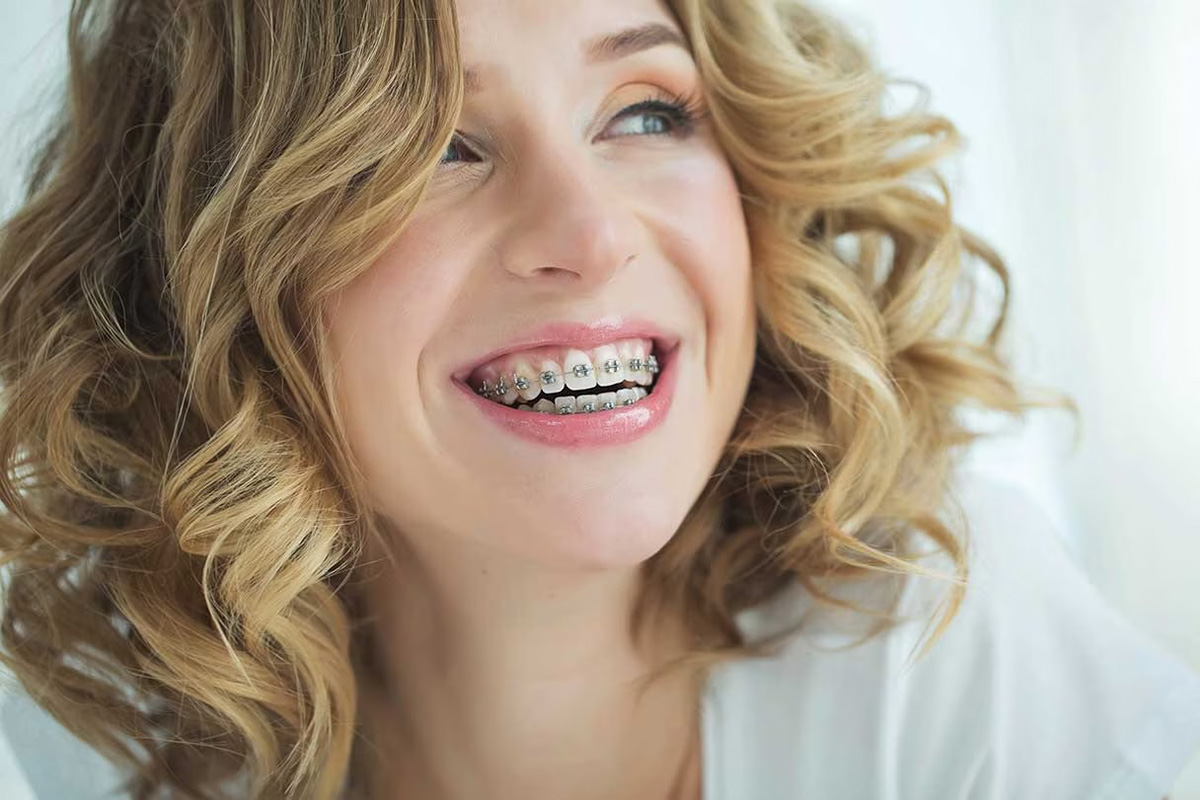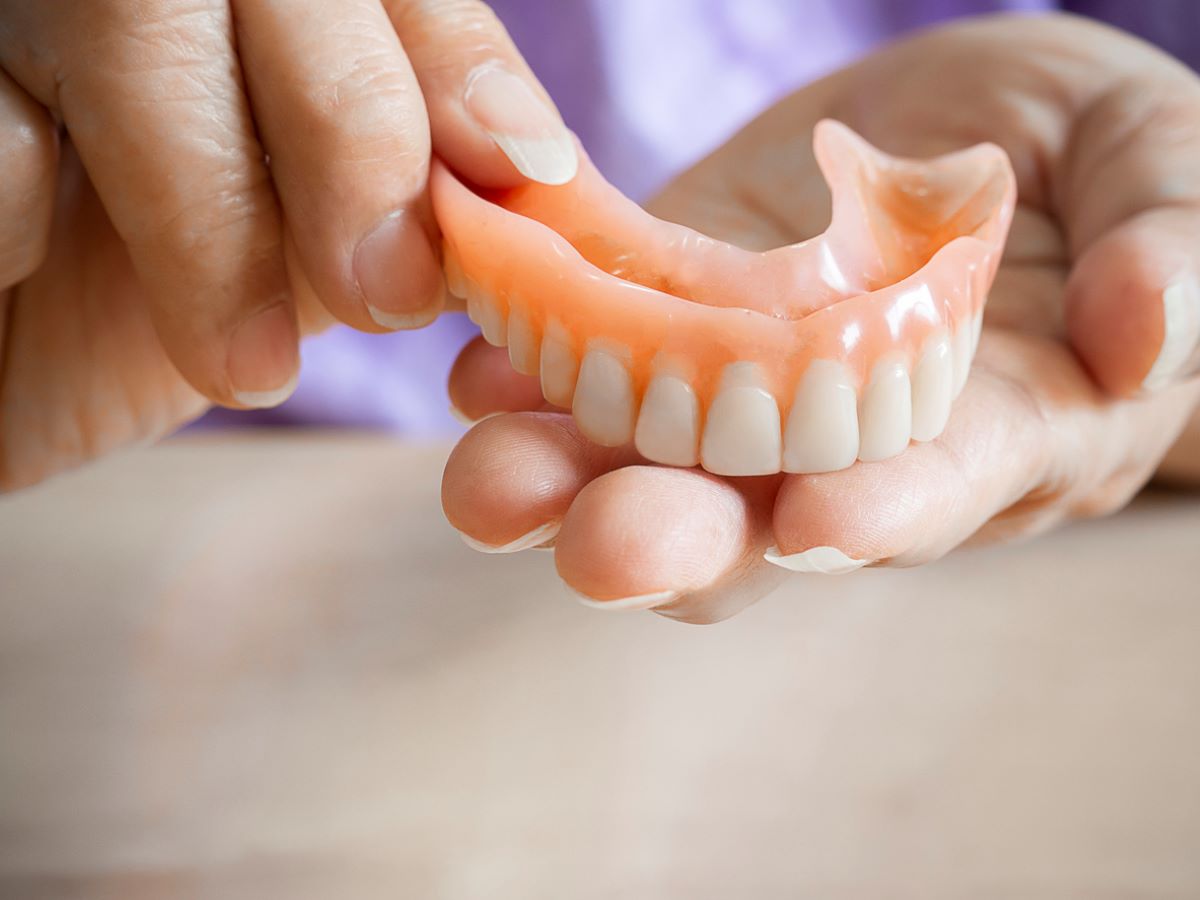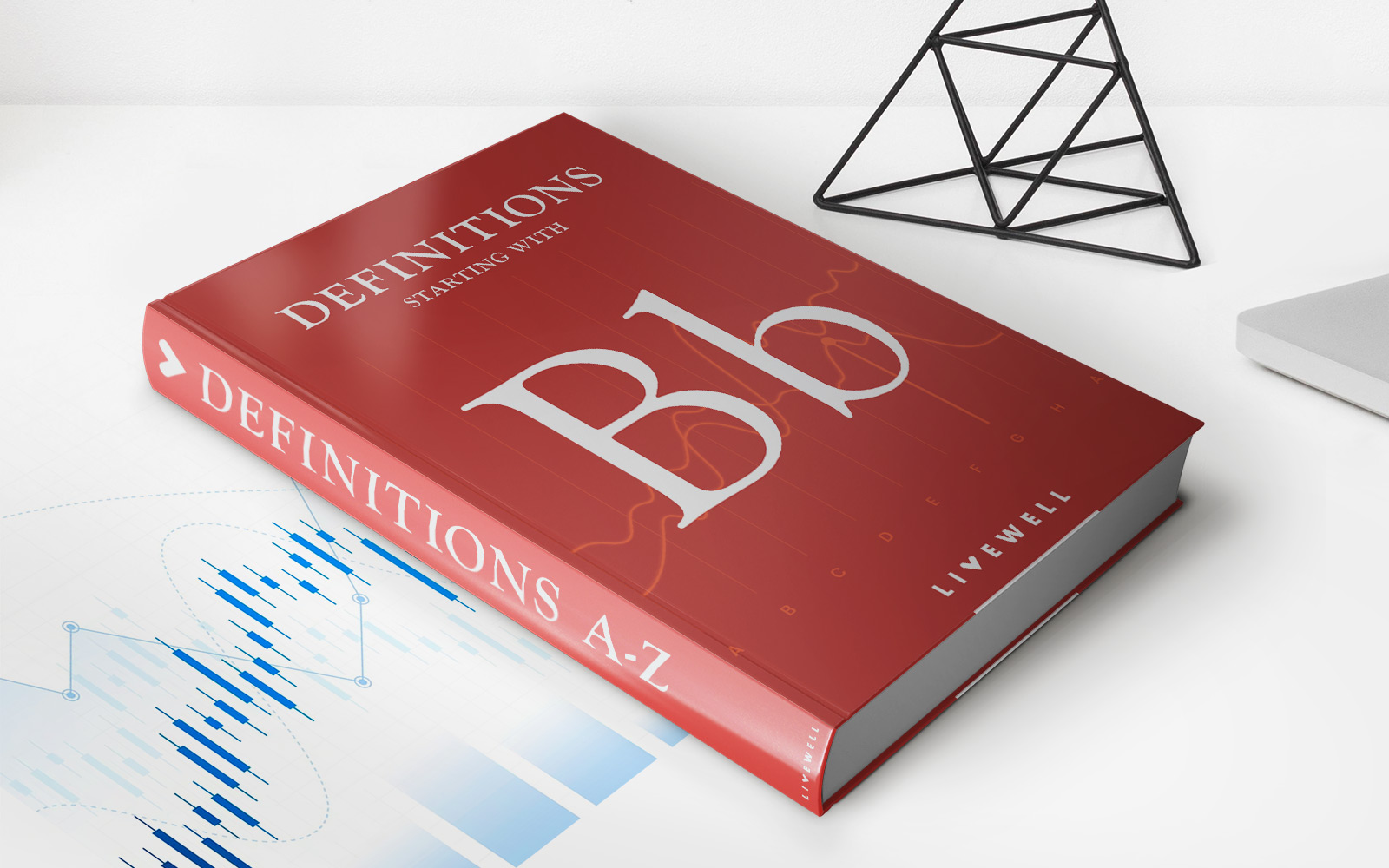Home>Finance>How Much Do Braces Cost For Adults Without Insurance?


Finance
How Much Do Braces Cost For Adults Without Insurance?
Published: November 16, 2023
Find out the cost of braces for adults without insurance and explore finance options to make orthodontic treatment more affordable.
(Many of the links in this article redirect to a specific reviewed product. Your purchase of these products through affiliate links helps to generate commission for LiveWell, at no extra cost. Learn more)
Table of Contents
- Introduction
- Factors affecting the cost of braces for adults without insurance
- Types of braces available for adults
- Average cost of metal braces for adults without insurance
- Average cost of ceramic braces for adults without insurance
- Average cost of lingual braces for adults without insurance
- Cost of other orthodontic treatments for adults without insurance
- Financing options for adults without insurance
- Conclusion
Introduction
Having straight and properly aligned teeth is not only important for oral health, but it also plays a significant role in boosting self-confidence and improving one’s appearance. For many adults, braces are a common solution to correct misaligned teeth and achieve a straight smile. However, one major concern that often arises when considering braces is the cost, especially for those without insurance coverage.
In this article, we will explore the factors that affect the cost of braces for adults without insurance and delve into the different types of braces available. We will also provide estimates for the average costs of various braces options, including metal braces, ceramic braces, and lingual braces.
It’s important to note that the actual cost of braces can vary significantly depending on various factors, such as your geographical location, the severity of your orthodontic issues, the length of treatment required, and the orthodontist’s expertise and experience. However, having a general idea of the average costs can help you make an informed decision and better prepare yourself financially.
Additonally, we will discuss other orthodontic treatments that may be required alongside or instead of braces, such as bite correction appliances or retainers, and the associated costs.
Lastly, for those who don’t have insurance coverage for orthodontic treatments, we will explore the financing options available that can help make braces more affordable and accessible.
Now, let’s explore the factors that influence the cost of braces for adults without insurance.
Factors affecting the cost of braces for adults without insurance
Several factors can influence the cost of braces for adults without insurance. Understanding these factors can help you better estimate the expenses associated with orthodontic treatment.
- Severity of the orthodontic issues: The complexity and severity of your orthodontic issues will play a significant role in determining the cost of braces. If you have minor misalignments or spacing issues, the treatment may be less expensive compared to more severe cases that require extensive orthodontic work.
- Treatment duration: The length of your orthodontic treatment will impact the overall cost of braces. Longer treatment durations generally result in higher costs.
- Orthodontist’s expertise and experience: The reputation, expertise, and experience of the orthodontist can also affect the cost. Highly skilled and experienced orthodontists often charge higher fees due to their expertise and successful track record.
- Geographical location: The cost of braces can vary based on your geographical location. Generally, large metropolitan areas tend to have higher costs compared to smaller towns or rural areas.
- Materials used: The type of braces you choose will impact the overall cost. Traditional metal braces are typically the most affordable option, while ceramic braces and lingual braces tend to be more expensive.
- Additional treatments required: In some cases, additional orthodontic treatments may be necessary alongside braces. These can include jaw surgery, tooth extraction, or the use of accessories such as rubber bands or retainers. The cost of these additional treatments will be added to the overall cost of braces.
It’s essential to consult with an orthodontist who will thoroughly evaluate your specific orthodontic needs and provide you with a detailed breakdown of the costs involved. They can help you understand which factors are most relevant to your situation and create a personalized treatment plan.
Now that we have discussed the factors that affect the cost, let’s explore the different types of braces available for adults.
Types of braces available for adults
When it comes to orthodontic treatment for adults, there are several types of braces available. Each type offers its own unique set of benefits and considerations. Here are the most common types of braces used for adults:
- Metal braces: Metal braces, also known as traditional braces, consist of metal brackets and wires. They are the most common type of braces and are known for their durability and effectiveness in treating a wide range of orthodontic issues. Metal braces are generally the most affordable option.
- Ceramic braces: Ceramic braces are similar to traditional metal braces, but the brackets are made of a tooth-colored ceramic material. This makes the braces less noticeable, offering a more aesthetic option for those who are concerned about the appearance of metal braces. However, ceramic braces tend to be slightly more expensive than metal braces.
- Lingual braces: Lingual braces are placed on the backside of the teeth, making them virtually invisible from the front. They are a great option for those who wish to undergo orthodontic treatment discreetly. Due to their customized design and placement, lingual braces tend to be the most expensive option.
- Invisalign: Invisalign is a popular alternative to traditional braces. Instead of brackets and wires, Invisalign uses a series of clear aligners that are custom-made to fit your teeth. These aligners are removable and virtually invisible, providing a more comfortable and convenient treatment option. Invisalign is typically more expensive compared to traditional braces.
It’s important to consult with an orthodontist to determine which type of braces is best suited to your specific orthodontic needs and personal preferences. They will take into account factors such as the complexity of your case, your lifestyle, and your budget to recommend the most appropriate treatment option.
Now that we have explored the types of braces available for adults, let’s move on to discussing the average cost of metal braces for adults without insurance.
Average cost of metal braces for adults without insurance
Metal braces are the most common type of braces used for orthodontic treatment. They are known for their durability, effectiveness, and affordability. While the cost of metal braces can vary depending on several factors, including geographical location and complexity of the case, we can provide an estimate of the average cost range for metal braces for adults without insurance.
On average, the cost of metal braces for adults without insurance can range from $3,000 to $7,000. This cost typically includes the initial consultation, braces installation, periodic adjustments, and the removal of braces once the treatment is completed.
It’s important to note that this is a general estimate, and the actual cost can differ based on the factors mentioned earlier. Factors such as the severity of the orthodontic issues, the length of treatment, and the expertise of the orthodontist can influence the overall cost.
Additionally, it’s worth considering that some orthodontic offices may offer flexible payment plans or discounts for paying in full upfront, which can help make the cost more manageable. It’s advisable to discuss the financial aspect of your treatment with your orthodontist to explore available options.
Next, let’s explore the average cost of ceramic braces for adults without insurance.
Average cost of ceramic braces for adults without insurance
Ceramic braces are a popular choice for adults who desire a more aesthetically pleasing alternative to traditional metal braces. These braces consist of tooth-colored or clear brackets and wires, making them less noticeable. While ceramic braces offer greater discretion, they often come at a slightly higher cost compared to metal braces.
The average cost of ceramic braces for adults without insurance can range from $4,000 to $8,000. It is important to note that the actual cost can vary depending on various factors, such as the complexity of the case and the geographical location of the orthodontic office.
The cost of ceramic braces includes the initial consultation, the installation of the braces, periodic adjustments, and removal once the treatment is complete. Additional fees may apply for other orthodontic appliances or supplementary treatments that may be required along with the braces.
It’s worth mentioning that ceramic braces may require more frequent orthodontic visits and adjustments compared to metal braces. This is because the ceramic material is more prone to staining and can be slightly more fragile than metal.
When considering ceramic braces, it is important to discuss your treatment plan and the associated costs with your orthodontist. They will provide a detailed breakdown of the expenses and explore any payment options or financing plans that may be available to make the cost more manageable.
Now, let’s move on to discussing the average cost of lingual braces for adults without insurance.
Average cost of lingual braces for adults without insurance
Lingual braces are an excellent option for adults who desire a discreet orthodontic treatment. Unlike traditional braces or ceramic braces, lingual braces are placed on the backside of the teeth, making them virtually invisible from the front. However, due to their customized design and placement, the cost of lingual braces is typically higher than other types of braces.
The average cost of lingual braces for adults without insurance can range from $8,000 to $10,000 or more. This cost includes the initial consultation, the custom design and manufacturing of brackets, the installation of the braces, periodic adjustments, and the removal of the braces once the treatment is completed.
It’s important to note that the actual cost can vary based on factors such as the complexity of the case, the geographical location of the orthodontic office, and the expertise of the orthodontist. Since lingual braces require specialized training and expertise to properly install and adjust, the cost tends to be higher to reflect the additional skills and materials involved.
While the cost of lingual braces may be higher, many find the aesthetic benefits outweigh the price. If you are considering lingual braces, it’s crucial to consult with an experienced orthodontist who has specialized knowledge in lingual orthodontics.
During your consultation, your orthodontist will provide you with a detailed breakdown of the costs and discuss any financing options or payment plans that may be available to make the treatment more affordable.
Now that we have explored the average cost of lingual braces, let’s move on to discussing other orthodontic treatments and their associated costs for adults without insurance coverage.
Cost of other orthodontic treatments for adults without insurance
In addition to braces, there are various other orthodontic treatments that may be required for adults to achieve optimal oral health and a straight smile. These treatments can address specific dental issues and ensure long-term stability after braces. Let’s explore some common orthodontic treatments and their associated costs for adults without insurance.
- Retainers: After completing orthodontic treatment, wearing retainers is essential to maintain the results. The cost of retainers can range from $200 to $500, depending on the type of retainer prescribed by your orthodontist.
- Expanders: Orthodontic expanders are used to widen the upper or lower jaw. The cost of expanders can range from $800 to $2,500, depending on the complexity of the case and the type of expander used.
- Headgear: Headgear is sometimes used to correct bite discrepancies or to address overcrowding. The cost of headgear can range from $500 to $2,000, depending on the type and duration of use.
- Braces adjustments and emergencies: Throughout the orthodontic treatment process, regular adjustments and occasional emergency visits may be required. These can incur additional costs ranging from $50 to $200 per visit, depending on the services provided.
- Special treatments: Specific dental issues, such as impacted teeth or severe bite problems, may require additional treatments such as tooth extractions or orthognathic surgery. The costs of these treatments vary widely and should be discussed with your orthodontist or oral surgeon.
It is essential to have a comprehensive consultation with your orthodontist to determine if additional orthodontic treatments are necessary for your specific case. They will provide you with a personalized treatment plan and a breakdown of the associated costs.
Now that we have discussed the costs of other orthodontic treatments, let’s move on to explore financing options that can help make orthodontic treatments more affordable for adults without insurance.
Financing options for adults without insurance
For adults without insurance coverage for orthodontic treatments, the cost of braces and related procedures can be a significant financial burden. However, there are several financing options available to make orthodontic treatments more affordable and manageable. Let’s explore some common financing options that can help you cover the costs:
- Payment plans offered by orthodontic offices: Many orthodontic offices offer flexible payment plans that allow you to spread out the cost of treatment over a period of time. These plans may require an initial down payment followed by monthly installments, making it easier to budget for the expenses.
- Orthodontic financing companies: There are specialized financing companies that focus on providing loans specifically for orthodontic treatments. These companies offer various payment plans with low or no interest rates, and they work directly with your orthodontist to facilitate the payment process.
- Healthcare credit cards: Healthcare credit cards, such as CareCredit, allow you to finance healthcare expenses, including orthodontic treatments. These cards often offer promotional financing options with low or no interest rates for a specified period, giving you the flexibility to pay off the balance over time.
- Savings accounts and flexible spending accounts (FSAs): If you have a savings account or an FSA, you can use these funds to cover the cost of orthodontic treatments. FSAs allow you to set aside pre-tax dollars for medical expenses, including orthodontics, providing a tax-saving advantage.
- Crowdfunding: In some cases, individuals or families turn to crowdfunding platforms to gather financial support for their orthodontic treatment. Sharing your story and treatment goals with friends, family, and the wider community can generate support and help alleviate the financial burden.
When considering financing options, it’s essential to carefully review and understand the terms and conditions, interest rates, repayment plans, and any associated fees. Discussing these options with your orthodontist can provide guidance and help you determine the best approach for your financial situation.
Remember, investing in orthodontic treatment is an investment in your oral health and overall well-being. Exploring available financing options can make it possible to achieve a straight and healthy smile.
Finally, let’s conclude our discussion on the cost of braces for adults without insurance.
Conclusion
Orthodontic treatments, including braces, are a worthwhile investment for adults seeking to enhance their oral health and improve their smile. While the cost of braces for adults without insurance can vary depending on several factors, including the type of braces and the complexity of the case, understanding the average costs and available financing options can help you make an informed decision.
Metal braces, the most common and affordable option, can range from $3,000 to $7,000, while ceramic braces with their aesthetic appeal may cost between $4,000 and $8,000. Lingual braces, offering discreet treatment, can be the most expensive option, with costs ranging from $8,000 to $10,000 or more.
In addition to the cost of braces, it’s important to consider other orthodontic treatments that may be required, such as retainers, expanders, or headgear. These treatments can incur additional costs, which should be discussed with your orthodontist during the treatment planning process.
Fortunately, there are various financing options available to make orthodontic treatments more affordable for adults without insurance. Orthodontic offices often offer flexible payment plans, and there are specialized financing companies and healthcare credit cards that cater specifically to orthodontic expenses. Additionally, personal savings accounts, FSAs, and even crowdfunding can provide financial support.
Remember to consult with your orthodontist to create a personalized treatment plan and receive a detailed breakdown of the costs involved. They can guide you through the options, help you understand the financial implications, and customize a payment plan that suits your budget and needs.
Investing in orthodontic treatment is an investment in your oral health, self-confidence, and overall well-being. With proper planning and consideration of financing options, you can achieve the smile you’ve always desired.
Now that you have a better understanding of the factors influencing the cost of braces, the types of braces available, and the financing options, you are well-equipped to make informed decisions regarding your orthodontic journey.














